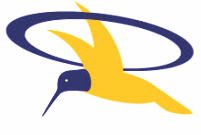Have you ever wondered what life was like for the first flight attendants?
While the job of a flight attendant is a much-desired profession, it is one of the most challenging jobs. The role of the cabin crew is to ensure the safety of the aircraft and the well-being of its occupants, including the crew. Cabin crew go through rigorous training before they can be certified to work on a commercial flight.
The cabin crew profession has its origins way back in the maritime world when air stewards were responsible for managing the safety and security of everyone onboard. While the legacy continues, the cabin crew job has become more difficult and equally rewarding for those who choose this career path.
This article looks at the origins of flight the cabin crew and their roles through the years.
Early days
The first flight attendant was reportedly Heinrich Kubis in 1912, who worked on German airships. Despite the profession later becoming a female-dominated domain, many early flight attendants, such as Heinrich Kubis himself, were males. He was a professional waiter who had worked in luxury hotels around the world and moved on to work on the infamous Hindenburg airship that exploded in 1937.

Kubis was responsible for overseeing the servers and chefs and was working when the disaster occurred. He helped passengers down from the dining area and assisted some in jumping to safety before escaping without injury.
1920s – 1940s
In the 1920s, the role of flight attendants became more diverse. For example, it was during this decade that Imperial Airways in the UK started to recruit cabin boys who could load luggage and reassure the passengers.

Meanwhile, in 1929, Pan Am in the USA was the first carrier to have onboard ‘stewards’ who served food. Then, in the 1930s, Boeing Air Transport and registered nurse Ellen Church worked together to devise a scheme where nurses were hired for three months at a time to travel onboard, look after the passengers, and quell their fear of flying. She became the world’s first female flight attendant.

However, during the Second World War, many of the nurses were enlisted into the armed forces as part of the ongoing war efforts. As a result of this, the requirement for flight attendants to have nursing backgrounds was changed.
1950-1970
In the ’50s and ’60s, being an air hostess, or air stewardess as it became known, was seen as an elite profession, but conditions were very strict. Only young unmarried females were accepted, and appearance was very important. If you wanted to get married, you had to resign, and the girls retired by the age of 30.
The uniforms were form-fitting and featured accessories, including the likes of hats, high-heeled shoes, and white gloves. As a result of this, a certain glamorous reputation was always perceived. In the late 1960s, fashion started to change to move with the times, and mini skirts and hot pants became more widespread.

Airlines used the stewardess image to appeal to mostly male passengers traveling for business, selling a provocative and promiscuous look. Things changed again in the ’70s with the start of unions, equal rights between men and women, and less discrimination. More males started to join as ‘air stewards,’ which later changed to ‘flight attendants’ in the US for male and female employees.
The 1980s and onward
As more time passed and conventions changed, airlines adapted to a business-style look for their flight attendant uniforms, and the dress code became slightly more functional. The role of the flight attendant had slightly changed, in that they were being regarded in terms of safety, not just service and appearance.
Crew challenges
Appearance and image are still very important factors for many airlines. That being said, things have become fairer in terms of discrimination, with weight regulations dropped in the late 1990s. By the early 2000s, female cabin crew could stave off retirement until age 55. Uniforms are still important but tested for functionality, and some carriers adopt a gender-neutral approach.

Recent years have seen some airlines allow visible tattoos and make-up for male and female employees. However, in the Middle East and Asia, there are many restrictions, resulting in an abundance of young female cabin crew.
Since the introduction of tougher safety regulations, the role of a flight attendant has become more difficult than it used to be. The modern name for the profession of ‘cabin crew’ reflects that the first priority is safety. The coronavirus pandemic created more challenges in recent years, with many cabin crew losing their jobs as the world ground to a halt and some never returning to the industry.
Disruptive passenger incidents have risen remarkably, and we have seen chaos following a surge of people wanting to travel. At the same time, airlines struggle with limited capacity, which adds further to the challenges for cabin crew. Sadly, for many currently working, the hours are longer and the salary lower than ever. Undoubtedly, there are difficult times ahead, but the role will continue to evolve.
What are your thoughts on cabin crew origins and their roles through the years? Share your opinion in the comments section.
Source:https://simpleflying.com/cabin-crew-through-the-ages-a-brief-history-of-flight-attendants/

